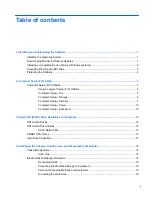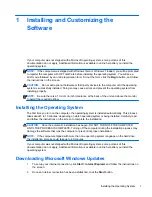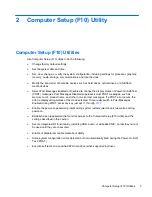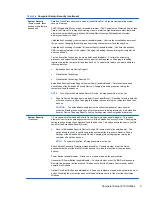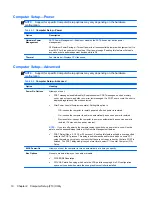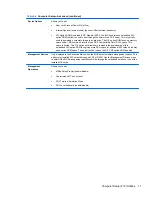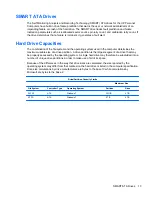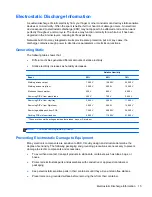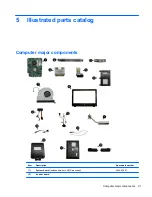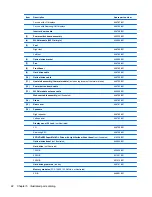
Table 2-4
Computer Setup—Security (continued)
System Security
(some models: these
options are hardware
dependent)
Data Execution Prevention (some models) (enable/disable) - Helps prevent operating system
security breaches.
PAVP (Models with Blu-ray drives) (disabled/min/max) - PAVP enables the Protected Audio Video
Path in the Chipset. This may allow viewing of some protected high definition content that would
otherwise be prohibited from playback. Selecting Max will assign 96 Megabytes of system
memory exclusively to PAVP.
Virtualization Technology (some models) (enable/disable) - Controls the virtualization features of
the processor. Changing this setting requires turning the computer off and then back on.
Virtualization Technology Directed I/O (some models) (enable/disable) - Controls virtualization
DMA remapping features of the chipset. Changing this setting requires turning the computer off
and then back on.
Trusted Execution Technology (some models) (enable/disable) - Controls the underlying
processor and chipset features needed to support a virtual appliance. Changing this setting
requires turning the computer off and then back on. To enable this feature you must enable the
following features:
●
Embedded Security Device Support
●
Virtualization Technology
●
Virtualization Technology Directed I/O
Embedded Security Device Support (some models) (enable/disable) - Permits activation and
deactivation of the Embedded Security Device. Changing this setting requires turning the
computer off and then back on.
NOTE:
To configure the Embedded Security Device, a Setup password must be set.
●
Reset to Factory Settings (some models) (Do not reset/Reset) - Resetting to factory defaults
will erase all security keys. Changing this setting requires turning the computer off and then
back on.
CAUTION:
The embedded security device is a critical component of many security
schemes. Erasing the security keys will prevent access to data protected by the Embedded
Security Device. Choosing Reset to Factory Settings may result in significant data loss.
System Security
(
continued
)
OS management of Embedded Security Device (some models) (enable/disable) - This option
allows the user to limit operating system control of the Embedded Security Device. Changing this
setting requires turning the computer off and then back on. This option allows the user to limit OS
control of the Embedded Security Device.
●
Reset of Embedded Security Device through OS (some models) (enable/disable) - This
option allows the user to limit the operating system ability to request a Reset to Factory
Settings of the Embedded Security Device. Changing this setting requires turning the
computer off and then back on.
NOTE:
To enable this option, a Setup password must be set.
Button Retask Password Protection (disable/enable) - Controls whether or not the Setup
password must be provided to WMI methods used to re-task the function of the side panel
buttons.
Power Button (enable/disable) - Allows you to disable or enable the power button.
Consumer IR Power Button (enable/disable) - Controls whether or not the BIOS will respond to
Remote Control power button presses. This does not affect the Remote Control power button
operation in Windows.
Optical Drive Eject Button (enable/disable) - Allows you to disable or enable the optical drive eject
button. Disabling the eject button does not disable software control of the eject function inside
Windows.
Computer Setup (F10) Utilities
9
Содержание 100B - All-in-One PC
Страница 1: ...Maintenance Service Guide HP 100B All in One PC ...
Страница 4: ...iv About This Book ...
Страница 8: ...viii ...



